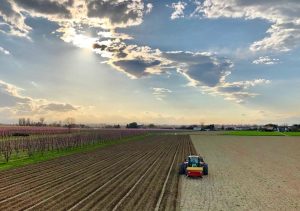Are Your Investments Paying Off? Why Proven ROI is Your Key to Success
January 23, 2020

Precision ag technology is fast becoming the chosen means of on-farm investment to improve efficiencies and maximise productivity.
However, any investment needs to add economic value to the business – and the best way to determine this is through return on investment (ROI): How much the value of the investment outweighs the cost of it.
To calculate ROI take the net profit of your investment (the value added of the investment minus its cost), divide by the cost of the investment and then multiply by 100 to get ROI in percentage form.
For example, if new equipment cost £2,000 but made you £3,000, then its ROI is 50%, while one that cost £4,000 and provided a return of £3,000 has an ROI of -25%.
The ROI will change over time with some investments providing quicker returns than others; this may affect both the short term and long term finances. But since there are so many variables in farming, and some investments are harder to quantify, calculating ROI isn’t always straightforward.
Risks of not knowing your ROI
 Calculating ROI may seem like a hassle, but it’s important to do to ensure the business isn’t losing money or missing out on higher profit.
Calculating ROI may seem like a hassle, but it’s important to do to ensure the business isn’t losing money or missing out on higher profit.
Avoiding investments in areas like precision technology because of uncertainty over its ROI, may lead to the loss of additional profit that would be facilitated through input savings or higher yields. In the long run, not having this technology can reduce competitiveness.
When another producer becomes more efficient through precision ag or other purchases and practices that improve business efficiency, then they could become more competitive and able to handle stronger risks.
There’s also a risk in assuming you’re seeing an ROI from an investment. This is more likely to happen if you make a lot of changes at once, because you may not be able to determine which change is providing the benefits you’re seeing.
If you can’t pinpoint what is providing positive returns, then you may be overpaying for the benefits you’re receiving.
ROI Calculation Challenges
With some investments, the ROI is easy to calculate and determine. Variable-rate technology is one example because it is calculated using hard numbers, such as input costs and yield, to calculate its ROI.
But some investments don’t provide hard numbers- take conservation practices like cover cropping. While there are metrics like soil organic matter and earthworm counts that can help measure improvements, it can be challenging to turn those changes into monetary amounts to determine the ROI.
ROI can also vary year on year based on weather conditions and other factors unique to your operation; irrigation will provide a good ROI in a dry year but not in a wet one, for example.
It can also vary throughout your farm. Even a strong technology like variable-rate is not a universal fit for every acre due to changing commodity, seed and input values. Farms with consistent yields throughout the field won’t see the same ROI as a field with highly variable yields.
How to Evaluate Potential ROI
Given all these variables, how can you determine if a new purchase or practice is going to give you a positive ROI?
First, look for local success stories and information on the investment you’re interested in. You may not see the same return as a farmer in a different region with different soil types. Making sure the information you have is local can help in getting a better feel on whether that investment will pay off.
When information is hard to find or there is still uncertainty if it’s the best decision for the farm, consider whether the business will do better if you implement this? Weigh up the risks of investing vs. not investing.
For example, there’s very little risk with guidance technology, so it makes sense to implement it across the whole farm. But when looking at the potential for yield increases with a change in row width, or a new crop variety with a new seed trait, there’s a higher risk associated with those changes, so you’d be better off testing them out on a small acreage before implementing them across the entire operation.
Finally, speak to a variety of people who have made and used the type of investment you are considering – their experience can help you make your decision.
Precision ag potential
While some practices or purchases may not pay off, precision ag is one area of farming that continues to provide a strong ROI.
According to Nesta, smart tractors – those fitted with precision technology like GPS – can increase yields while reducing fuel inputs and soil erosion. In 2015 it calculated that a tractor guiding system can add an additional €18/ha (£16.24/ha) to winter wheat returns, plus a 10% reduction in fuel costs.
Over an average of 63ha of croppable land, this would boost annual incomes by £1,023, with fuel savings of £854 (2010/2011 data).
When debating whether to invest in precision ag, consider the efficiency plan of your farm. What parts of the business would be made more profitable or efficient by an investment? Then decide
which technologies are needed to achieve that.
When considering the best technology to adopt, working with a company like Trimble can guide you in making the right decisions for your operation.






